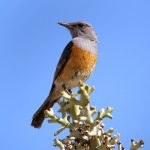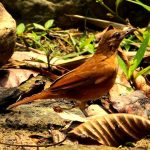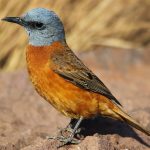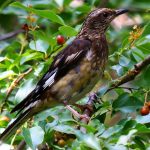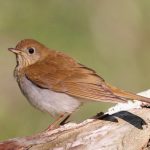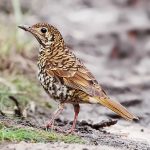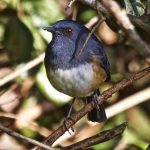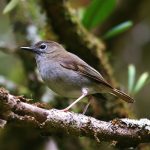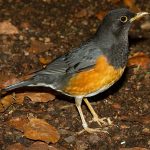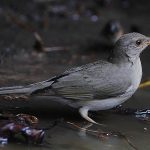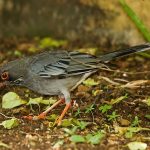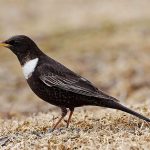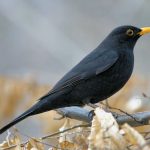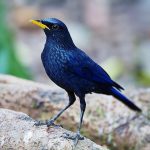Drakensberg rockjumper
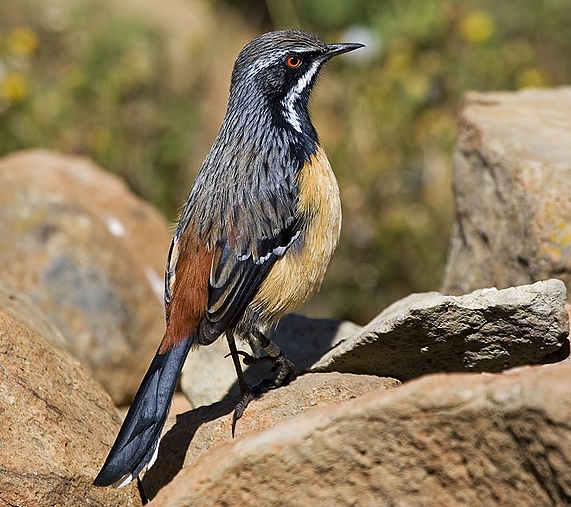
 |
| Photo by Robert Wienand (Flickr) |
Common name:
Drakensberg rockjumper (en); tordo-de-peito-alaranjado (pt); chétopse doré (fr); saltarrocas del Drakensberg (es); orangebrust-felsenspringer (de)
Taxonomy:
Order Passeriformes
Family Turdidae
Range:
This species is endemic to South Africa and Lesotho, being found in the highlands of Lesotho and the nearby mountain grassland regions of the Eastern Cape, KwaZulu-Natal and Free State Province.
Size:
These birds are 23-25 cm long and weigh 75-100 g.
Habitat:
The Drakensberg rockjumper is found in high altitude grasslands and rocky areas, typically at altitudes above 1.800 m.
Diet:
They are strictly insectivorous, taking grasshoppers, moths and insect larvae and pupae which they collect on the ground.
Breeding:
Drakensberg rockjumpers breed in August-February. They are monogamous and the breeding pair is sometimes assisted by 1-2 helpers. The nest is a large untidy cup made of grass and twigs and lined with soft rootlets, grass and hair. It is usually placed on the ground, well concealed by tufts of grass, an overhanging rock, or sometimes a small scrub. The female lays 2-3 white eggs, which are incubated by both sexes. There is no information on the length of the incubation and fledging periods, but the chicks are known to be fed by both sexes.
Conservation:
IUCN status – LC (Least Concern)
This species has a restricted breeding range, but the population is suspected to be stable in the absence of evidence for any declines or substantial threats.
